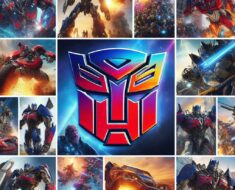How a visionary filmmaker created a cultural phenomenon that spans generations and galaxies
Star Wars is more than just a series of movies. It is a myth, a legend, a universe that has captivated millions of fans around the world for over four decades. From its humble origins in the mind of George Lucas, to its unprecedented success and influence, to its ongoing expansion and evolution, Star Wars is a saga of hope, conflict, and legacy that reflects and shapes our own history and culture.
A Long Time Ago, in a Galaxy Far, Far Away…
The story of Star Wars began in 1971, when George Lucas, a young filmmaker who had just graduated from the University of Southern California, founded his own company, Lucasfilm, in San Rafael, California. Lucas had a vision of creating a space opera, a genre that combined science fiction, fantasy, adventure, and romance, inspired by the serials and comics of his childhood, such as Flash Gordon and Buck Rogers.
Lucas spent several years developing his idea, writing and rewriting drafts, pitching and rejecting concepts, and struggling to find a studio that would finance his ambitious project. He envisioned a trilogy of films that would tell the story of a young hero named Luke Skywalker, who joins a rebellion against a tyrannical empire, learns the ways of a mystical power called the Force, and discovers his connection to a dark lord named Darth Vader.
After securing a deal with 20th Century Fox, Lucas began production on the first film, which he initially titled The Star Wars. He faced numerous challenges and setbacks, such as budget overruns, technical difficulties, location problems, and creative disagreements. He also assembled a cast of relatively unknown actors, such as Mark Hamill, Carrie Fisher, and Harrison Ford, who would play the roles of Luke, Princess Leia, and Han Solo, respectively.
Despite the hardships, Lucas managed to complete the film, which he renamed Star Wars, and released it on May 25, 1977. The film was an instant hit, breaking box office records, receiving critical acclaim, and winning seven Academy Awards. It also sparked a cultural phenomenon, with fans lining up to see the film multiple times, buying merchandise, and forming fan clubs. Star Wars became a global sensation, and Lucas became a household name.

The Force is Strong with This One
Encouraged by the success of Star Wars, Lucas decided to continue the story with two more films, which he planned to direct himself. However, he soon realized that he preferred to focus on the creative aspects of the saga, rather than the technical and managerial ones. He also wanted to expand his company and explore other projects, such as Indiana Jones, another adventure franchise that he co-created with his friend and fellow filmmaker Steven Spielberg.
Therefore, Lucas hired other directors to helm the sequels, while he remained as the executive producer and the main writer. He also founded several subsidiaries of Lucasfilm, such as Industrial Light & Magic (ILM), a special effects company, and Skywalker Sound, a sound design company, to provide the cutting-edge technology and innovation that he needed for his films.
The first sequel, The Empire Strikes Back, was directed by Irvin Kershner, and released in 1980. It was darker and more complex than the first film, featuring a shocking twist that revealed that Darth Vader was Luke’s father. The film was also a critical and commercial success, earning four Academy Awards and surpassing the original in box office gross.
The second sequel, Return of the Jedi, was directed by Richard Marquand, and released in 1983. It was lighter and more humorous than the previous film, featuring the introduction of the Ewoks, a race of furry creatures that helped the rebels defeat the empire. The film also concluded the story of Luke, Leia, and Han, as they faced their final confrontation with Vader and the Emperor. The film was another hit, earning four Academy Award nominations and becoming the highest-grossing film of the year.
With the completion of the original trilogy, Lucas had achieved his vision of creating a space opera that spanned three films and six hours. He had also created a rich and expansive universe that inspired countless spin-offs, such as novels, comics, games, and cartoons. Star Wars had become a cultural icon, and Lucas had become a legend!
The Phantom Menace
After finishing the original trilogy, Lucas took a break from Star Wars, focusing on other projects and raising his children. He also became interested in digital filmmaking, which he saw as the future of cinema. He experimented with new technologies and techniques, such as computer-generated imagery (CGI), digital cameras, and digital editing. He also revisited his old films, and released special editions of the original trilogy, featuring enhanced effects and added scenes.
In the early 1990s, Lucas decided to return to Star Wars, and began working on a new trilogy of films that would serve as a prequel to the original one. He wanted to tell the story of the rise and fall of Anakin Skywalker, the young Jedi who would become Darth Vader, and the events that led to the creation of the empire and the rebellion. He also wanted to showcase the new possibilities of digital filmmaking, and create a more spectacular and immersive experience for the audience.
The first prequel, The Phantom Menace, was directed by Lucas himself, and released in 1999. It was set 32 years before the original film, and introduced new characters, such as Qui-Gon Jinn, a Jedi master, Obi-Wan Kenobi, his apprentice, Padmé Amidala, a queen and a senator, and Jar Jar Binks, a clumsy alien. It also featured a young Anakin Skywalker, who was discovered by the Jedi as a potential chosen one, and a mysterious enemy, Darth Maul, who wielded a double-bladed lightsaber. The film was a huge event, attracting long lines and massive hype. It was also a box office smash, becoming the highest-grossing film of the year and the second-highest-grossing film of all time at that point. It also received three Academy Award nominations.



However, the film also received mixed reviews from critics and fans, who criticized the film’s plot, dialogue, acting, and reliance on CGI. Many also disliked the new characters, especially Jar Jar Binks, who was seen as annoying and offensive. The film also sparked controversy over its portrayal of some alien races, which were accused of being racial stereotypes. The film divided the Star Wars fandom, and tarnished Lucas’s reputation.
Attack of the Clones
The second prequel, Attack of the Clones, was also directed by Lucas, and released in 2002. It was set 10 years after the first film, and followed the romance between Anakin and Padmé, who were now adults, and the outbreak of a galactic war, which was orchestrated by a mysterious Sith lord, Darth Sidious, and his apprentice, Count Dooku. The film also featured the creation of the clone army, which was based on the genetic template of a bounty hunter named Jango Fett, and the father of Boba Fett, a fan-favorite character from the original trilogy. The film was another commercial success, becoming the fourth-highest-grossing film of the year and the 15th-highest-grossing film of all time at that point. It also received one Academy Award nomination.


However, the film also received negative reviews from critics and fans, who continued to criticize the film’s plot, dialogue, acting, and reliance on CGI. Many also disliked the romance between Anakin and Padmé, which was seen as poorly written and unconvincing. The film also failed to recapture the magic and excitement of the original trilogy, and further alienated the Star Wars fandom.
Revenge of the Sith
The third prequel, Revenge of the Sith, was again directed by Lucas, and released in 2005. It was set three years after the second film, and depicted the climax of the galactic war, the betrayal of the Jedi by the clone army, and the transformation of Anakin into Darth Vader. The film also featured the birth of Luke and Leia, the twins of Anakin and Padmé, and the final duel between Anakin and Obi-Wan, which resulted in Anakin’s mutilation and confinement to a life-support suit. The film was the most anticipated and the most well-received of the prequel trilogy, becoming the second-highest-grossing film of the year and the ninth-highest-grossing film of all time at that point. It also received one Academy Award nomination.
The film also received positive reviews from critics and fans, who praised the film’s action, drama, and emotion. Many also appreciated the film’s connection to the original trilogy, and the completion of Anakin’s tragic arc. The film also redeemed Lucas’s reputation, and restored some of the faith and love of the Star Wars fandom.


A New Hope
After finishing the prequel trilogy, Lucas took another break from Star Wars, focusing on other projects and raising his children. He also became interested in selling his company and retiring from filmmaking. He had no plans to make more Star Wars films, but he did not rule out the possibility of someone else continuing the saga.
In 2012, Lucas surprised the world by announcing that he had sold Lucasfilm to The Walt Disney Company, the media giant that owned other popular franchises, such as Marvel and Pixar. He also revealed that he had been working on a story treatment for a new trilogy of films that would serve as a sequel to the original one. He entrusted the future of Star Wars to Disney, and agreed to serve as a creative consultant for the new films.
The announcement was met with mixed reactions from fans and critics, who were excited about the prospect of more Star Wars films, but also worried about the quality and integrity of the saga under Disney’s ownership. Some also felt that Lucas had betrayed his vision and legacy, and sold out to a corporate entity.
The Force Awakens
The first sequel, The Force Awakens, was directed by J.J. Abrams, a fan and a friend of Lucas, and released in 2015. It was set 30 years after the original film, and followed the adventures of Rey, a scavenger, Finn, a former stormtrooper, and Poe, a pilot, who joined forces with the old heroes, Luke, Leia, and Han, to fight against a new threat, the First Order, a remnant of the empire, and its leader, Kylo Ren, the son of Han and Leia, and a fallen Jedi. The film also featured the return of the Millennium Falcon, the iconic spaceship of the saga, and the death of Han Solo, who was killed by Kylo Ren. The film was a huge event, attracting long lines and massive hype. It was also a box office smash, becoming the highest-grossing film of the year and the third-highest-grossing film of all time at that point. It also received five Academy Award nominations.
The film also received positive reviews from critics and fans, who praised the film’s action, humor, and nostalgia. Many also appreciated the film’s diversity and representation, featuring a female, a black, and a Latino lead. The film also rekindled the magic and excitement of the original trilogy, and welcomed a new generation of Star Wars fans.
The Last Jedi
The second sequel, The Last Jedi, was directed by Rian Johnson, a filmmaker who had made acclaimed films, such as Brick and Looper. It was released in 2017. It was set immediately after the first film, and followed the journey of Rey, who sought the guidance of Luke, who had become a recluse on a remote planet, and the struggle of the Resistance, led by Leia, who faced the overwhelming power of the First Order, led by Kylo Ren, who had killed his master, Snoke, and assumed command. The film also featured the death of Luke, who sacrificed himself to save the Resistance, and the death of Leia, who passed away in real life, and was honored in the film. The film was another commercial success, becoming the highest-grossing film of the year and the ninth-highest-grossing film of all time at that point. It also received four Academy Award nominations.
However, the film also received mixed reviews from critics and fans, who criticized the film’s plot, character, and tone. Many also disliked the film’s subversion and deconstruction of the Star Wars tropes and themes, and the portrayal of Luke, who was seen as depressed and cynical. The film also sparked controversy and backlash, and divided the Star Wars fandom, and tarnished Disney’s reputation.
The Rise of Skywalker
The third sequel, The Rise of Skywalker, was again directed by J.J. Abrams, who returned to the helm after the departure of Colin Trevorrow, who had been originally hired to direct the film. It was released in 2019. It was set one year after the second film, and followed the final battle between the Resistance and the First Order, which was revealed to be controlled by a resurrected Emperor Palpatine, the original villain of the saga. The film also featured the redemption of Kylo Ren, who turned back to the light side and helped Rey defeat Palpatine, and the revelation of Rey’s identity, who was revealed to be Palpatine’s granddaughter, and adopted the name of Skywalker. The film also featured the return of Lando Calrissian, a fan-favorite character from the original trilogy, and the cameo of Han Solo, who appeared as a memory to Kylo Ren. The film was another commercial success, becoming the sixth-highest-grossing film of the year and the 15th-highest-grossing film of all time at that point. It also received three Academy Award nominations.
However, the film also received negative reviews from critics and fans, who continued to criticize the film’s plot, character, and tone. Many also disliked the film’s reversal and retcon of the previous film, and the introduction of new and unnecessary elements, such as Palpatine’s return and Rey’s lineage. The film also failed to recapture the magic and excitement of the original trilogy, and further alienated the Star Wars fandom.
With the completion of the sequel trilogy, Disney had achieved its vision of creating a space opera that spanned nine films and 18 hours. It had also created a rich and expansive universe that inspired countless spin-offs, such as novels, comics, games, and cartoons.
A Galaxy of Stories
After finishing the sequel trilogy, Disney decided to explore other stories and characters in the Star Wars universe, and began producing standalone films and series that were not part of the main saga. These included:
- Rogue One, a film that was released in 2016, and told the story of a group of rebels who stole the plans of the Death Star, the superweapon of the empire, and sacrificed themselves in the process. The film was a commercial and critical success, becoming the second-highest-grossing film of the year and the 29th-highest-grossing film of all time at that point. It also received two Academy Award nominations.
- Solo, a film that was released in 2018, and told the story of a young Han Solo, who became a smuggler and a pilot, and met his friends and foes, such as Chewbacca, Lando, and Qi’ra. The film was a commercial and critical failure, becoming the lowest-grossing film of the franchise and the first to lose money. It also received one Academy Award nomination.
- The Mandalorian, a series that debuted in 2019, and told the story of a bounty hunter, who protected a child, who was revealed to be a member of the same species as Yoda, and sought by the remnants of the empire. The series was a commercial and critical success, becoming the most-watched show on Disney+, the streaming service of Disney, and winning seven Emmy Awards. It also introduced a new character, Grogu, who became a viral sensation and a merchandising goldmine.
- The Clone Wars, a series that debuted in 2008, and told the story of the galactic war, and the adventures of Anakin, Obi-Wan, and Ahsoka, a new character who became a fan-favorite. The series was a commercial and critical success, becoming the most-watched show on Cartoon Network, the channel that aired the series, and winning seven Emmy Awards. It also expanded and enriched the lore and the canon of the Star Wars universe.
These and other spin-offs, such as Rebels, Resistance, and Bad Batch, showed the diversity and the potential of the Star Wars universe, and appealed to different audiences and tastes. They also demonstrated the creativity and the passion of the filmmakers and the fans, who contributed to the growth and the evolution of the Star Wars universe.
The Future of the Force
The story of Star Wars is not over yet. Disney has announced several new projects that will continue and expand the Star Wars universe, such as:
- Ahsoka, a series that will follow the adventures of Ahsoka Tano, who will search for Ezra Bridger, a missing Jedi, and Thrawn, a cunning villain. The series will also feature the return of Hayden Christensen, who will reprise his role as Anakin Skywalker.
- Obi-Wan Kenobi, a series that will follow the life of Obi-Wan Kenobi, who will watch over Luke Skywalker, and face his old enemy, Darth Vader. The series will also feature the return of Ewan McGregor, who will reprise his role as Obi-Wan Kenobi.
- Andor, a series that will follow the missions of Cassian Andor, a rebel spy, and K-2SO, a droid, who will fight against the empire. The series will also feature the return of Diego Luna, who will reprise his role as Cassian Andor.
- The Book of Boba Fett, a series that will follow the exploits of Boba Fett, a bounty hunter, and Fennec Shand, a mercenary, who will rule over the criminal underworld. The series will also feature the return of Temuera Morrison, who will reprise his role as Boba Fett.
- The Acolyte, a series that will follow the story of a dark side user, who will explore the secrets and the mysteries of the Sith. The series will also feature a new era of the Star Wars universe, the High Republic, which was a golden age of the Jedi and the Republic.
The Legacy of the Force
The story of Star Wars is not only a story of a galaxy far, far away. It is also a story of our own world, and how it has been influenced and shaped by the Star Wars universe. Star Wars has become a part of our culture, our history, and our identity. It has inspired and entertained generations of people, who have shared and celebrated their love and passion for the saga. It has also challenged and provoked discussions and debates, who have expressed and defended their opinions and perspectives on the saga. Star Wars has become a source of joy and sorrow, of hope and despair, of light and dark.
Star Wars has also become a part of our science, our technology, and our innovation. It has stimulated and motivated scientists, engineers, and inventors, who have created and developed new and amazing devices and discoveries, such as robots, holograms, and lasers. It has also influenced and shaped the film industry, and the art of storytelling, who have adopted and improved the techniques and the methods of the Star Wars films, such as special effects, sound design, and editing. Star Wars has become a catalyst and a model, of creativity and excellence, of vision and legacy.
Star Wars is more than just a series of movies. It is a myth, a legend, a universe that has captivated millions of fans around the world for over four decades. From its humble origins in the mind of George Lucas, to its unprecedented success and influence, to its ongoing expansion and evolution, Star Wars is a saga of hope, conflict, and legacy that reflects and shapes our own history and culture.
Star Wars is the force, and the force is with us. Always.







